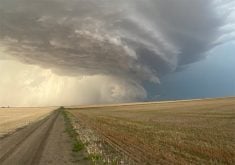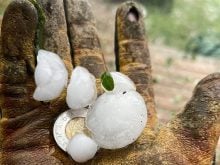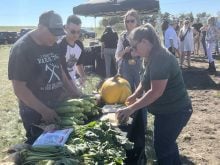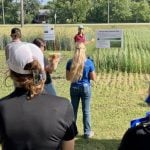Producers have become accustomed to their crop protection products working well. When something goes wrong, they get nervous. They can’t afford a failure with these products, especially with tight farm margins.
“While manufacturers are generally very good about standing behind their products, they also need solid evidence that their product didn’t perform,” said Clark Brenzil, weed control specialist with Saskatchewan Agriculture.
“Producers must remember that if crop protection products are used in ways that are not indicated on the product label, the user will bear the risk of a failure with that use.”
Read Also

Factors that can cause heavy rainfall
There are several factors that can contribute to an extreme rainfall event, the first is atmospheric moisture.
He said application records are critical to the success of any claim for compensation. A log should be kept with the sprayer and the information in the log should include the fields sprayed and the chemical used, as well as the time and date, pressures, application rate, the nozzles used, water volumes and speed, and any unusual happenings during application.
Weather is also a key piece of information. An ongoing record of weather details throughout the spraying season should be kept. It should include items such as humidity, wind speed, moisture conditions, daily high and low temperatures, and any unusual events such as hail, frost or violent winds.
If the producer’s land base is widely dispersed, records should be kept for two or three representative locations.
Any complaint about crop protection products should be made immediately. Waiting until harvest to contact manufacturing representatives will yield few or no results, said Brenzil.
“Producers should be out in the field two to three weeks after a pesticide application to see if everything is as they expect it to be. The farther away from that two- to three-week period, the more difficult it is to diagnose the injury. If a producer catches the problem soon enough, it might be able to be corrected.
“So, if there are concerns, the dealer and the manufacturer representatives should be contacted as soon as possible. The summer months are busy for manufacturer field representatives so persistence pays off.”
Saskatchewan Agriculture staff can provide a list of local manufacturer representatives and their contact numbers. If the first call to the local representative brings no response, producers should contact the regional manager, customer hotline or someone in another level of the company, said Brenzil.
Arrangements to view the field in question should be made. The concerns should be indicated, and a copy of the information collected by the producer should be presented.
“Untreated areas in the field will help to illustrate any differences in effectiveness. So it might be a good idea to shut a section of the boom off two or three times in a field to create control areas. This also allows the producer to know if the application is providing a benefit.”
Brenzil reminds producers not to expect an immediate commitment to settle, as the manufacturer’s representative is not usually the person making such decisions.
He also said an independent consultant hired to record the damage might be good insurance in case of delays in the process of compensation from the manufacturer.
If the producer decides to dispute the manufacturer’s decision in court, this objective information will be necessary.
“In most cases, however, crop protection products work the way they should. Furthermore, their manufacturers realize that even though their products are researched extensively, there will likely be some unforeseen circumstances that will result in the product not performing as expected. So, when things go wrong, the manufacturer is interested in addressing the issue,” said Brenzil.














